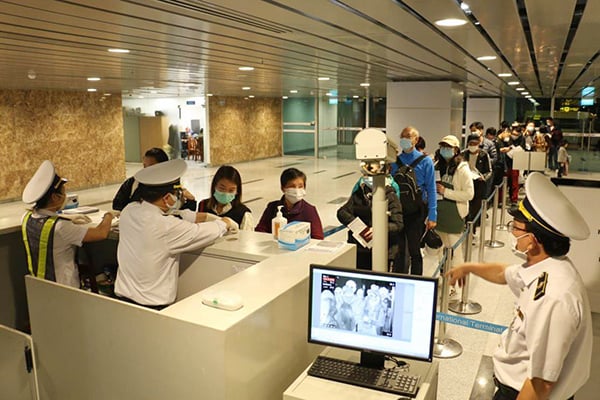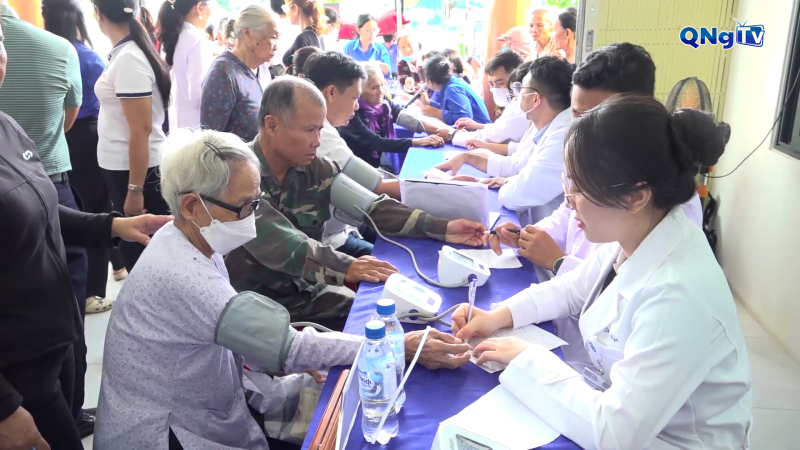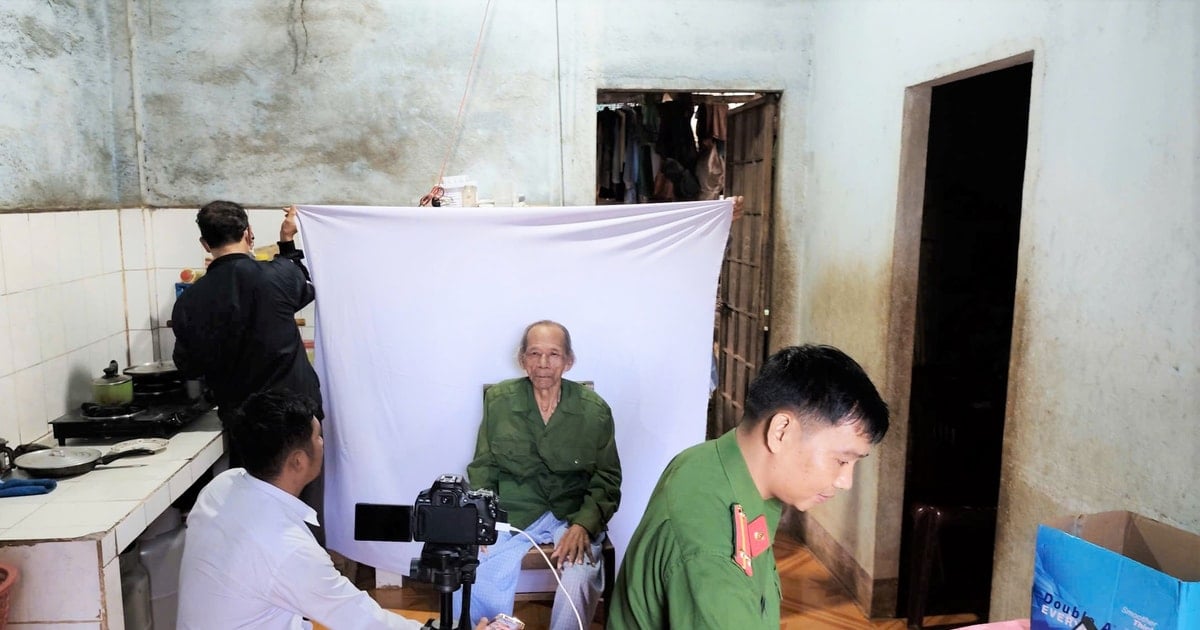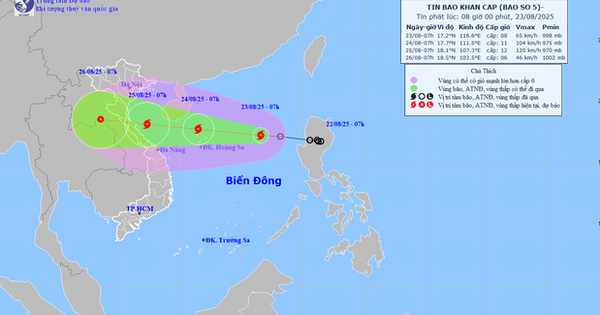Accordingly, the prescription and drug sales systems will be connected. Patients who buy drugs will be controlled according to the prescriptions given in the system to help patients more conveniently receive drugs, while increasing transparency and effectively controlling the prescription and drug dispensing activities.
End of handwritten prescriptions
To date, most public hospitals in Dong Nai province have fully integrated the electronic prescription system into the hospital management software (HIS), strictly implementing Circular No. 26 of the Ministry of Health on prescription of outpatient pharmaceuticals and biological products. Medical facilities have unified prescription forms, strictly controlled addictive and psychotropic drugs, and ensured that each visit only prescribes one prescription, on time.
use.
In recent years, Binh Phuoc General Hospital (Dong Xoai Ward) has no longer issued handwritten prescriptions. After the doctor has finished writing the electronic prescription, it will be transferred to the software and sent to the department that dispenses the medicine to the patient. Thanks to that, the process of receiving medicine at the counter has been shortened to just a few minutes.
 |
| Binh Phuoc Traditional Medicine Hospital deploys electronic prescriptions to help manage the drug route transparently, trace, and control drug abuse. Photo: Ngan Ha |
Mr. Dinh Hang Hai (residing in Dong Xoai ward) shared: “I can look up information about the type of medicine, dosage, instructions for use and treatment history using the QR code on the electronic prescription. Patients no longer have to spend a lot of time waiting in line like before. The quantity of medicine is also clearly declared by the doctor,
transparent.
Dr. Tran Quoc Tuan, Deputy Head of the General Planning Department, Binh Phuoc General Hospital, said: Every day, the hospital examines and treats 500-700 inpatients and outpatients. Deploying electronic prescriptions has helped the hospital better manage the treatment process and dispense medicine to patients. The electronic prescription system is connected to the National Drug Administration System and the health insurance agency, helping management agencies to promptly detect and handle acts of prescribing in violation of regulations, selling drugs without prescriptions or abusing drugs.
For Binh Phuoc Traditional Medicine Hospital (Binh Phuoc ward), electronic prescriptions have been deployed synchronously by the hospital since 2020.
so far
“If electronic prescriptions are taken seriously, the management of drug routes will be more transparent, helping to trace and control drug abuse, especially antibiotics. This will enhance the ability to monitor prescriptions, make the dispensing process transparent and trace the origin of drugs at medical examination and treatment facilities,” emphasized Mr. Le Quang Thai, Deputy Director of Binh Phuoc Traditional Medicine Hospital.
Pharmacist Specialist II Bui Mai Nguyet Anh, Head of Pharmacy Department, Thong Nhat General Hospital (Long Binh Ward), said: By October 1, 2025, medical examination and treatment facilities must complete electronic prescriptions, including digital signatures, and electronic prescriptions must have the same legal value as paper prescriptions. The hospital has developed a plan to implement electronic medical records, registering digital signatures for all doctors and medical staff to comply with the schedule of Circular No. 26.
Dong Nai province currently has nearly 12 million electronic prescriptions uploaded to the National Drug Administration System. In addition to public and private hospitals, many private clinics and polyclinics in the province have implemented electronic prescriptions. This is to control the sale of drugs without prescription, especially antibiotics.
Reduce the burden on patients
Circular No. 26 also brings joy to many patients, especially those with chronic diseases. According to the new regulations, instead of being prescribed medication for no more than 30 days as before, people with chronic diseases will now be prescribed for up to 90 days.
Although he lives in Bu Dang commune, Mr. Vo Ngoc Thien has to travel nearly 60km to Binh Phuoc General Hospital for a check-up and to get medicine at least once a month. Now, with a new circular from the Ministry of Health, he only has to go to the hospital to get medicine once every 3 months.
Mr. Thien shared: “Previously, I had to go get medicine every month, each time I went like that was very expensive, the travel fee was almost equal to the medicine cost. Recently, the Ministry of Health issued a new circular on providing medicine for 90 days for patients with stable underlying diseases, I find it very convenient.”
Another breakthrough of Circular No. 26 is the requirement to integrate personal identification numbers into prescriptions. This is an important step to synchronize medical data with the National Population Database system, demonstrating the spirit of the Government's Project 06. When people use personal identification numbers, many administrative information such as: full name, date of birth, gender, address... will be automatically displayed on the system, helping to reduce prescription time, limit errors and simplify procedures for both patients and medical staff.
Mr. Le Quang Thai, Deputy Director of Binh Phuoc Traditional Medicine Hospital, said: The hospital is waiting for instructions from the Department of Health to implement steps to complete electronic health records and electronic medical records to connect medical examination and treatment facilities, ensuring the principle that data is always correct - sufficient - clean - alive and synchronized. At that time, people can easily access their health information anytime, anywhere.
Galaxy - Thu Hong
Source: https://baodongnai.com.vn/xa-hoi/y-te/202508/siet-chat-quan-ly-su-dung-thuoc-50a27b6/








![[Photo] General Secretary To Lam attends the 80th Anniversary of the Cultural Sector's Traditional Day](https://vstatic.vietnam.vn/vietnam/resource/IMAGE/2025/8/23/9f771126e94049ff97692935fa5533ec)


























![[Photo series] Close-up of a series of 'huge' aircraft fuel tanks at Long Thanh Airport](https://vstatic.vietnam.vn/vietnam/resource/IMAGE/2025/8/23/36dd3d00663540209336017dafb42441)







































































Comment (0)